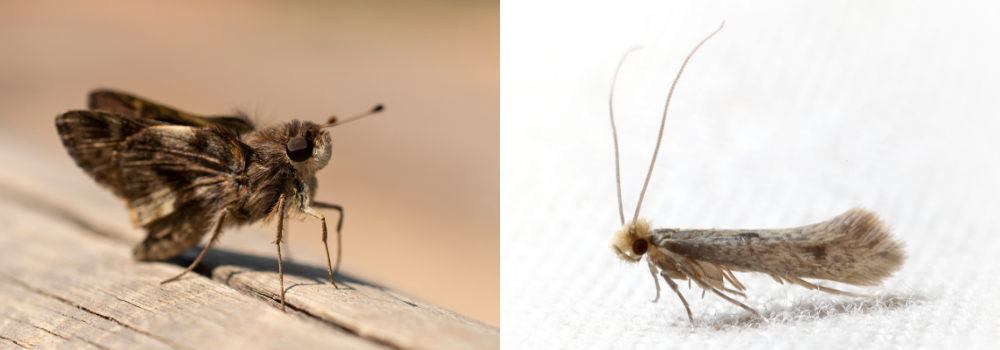
Can Pantry Moths Eat Clothes?
Pantry moths are a common household pest that can be very difficult to get rid of. They are attracted to food and other items that contain natural fibers, and that could include items such as clothing. In reality though, if you find holes in your clothing they are almost guaranteed to have been caused by another beast - the common clothes moth (also known as carpet moth). Carpet moth larvae are particularly fond of feasting on natural fibers like wool, cashmere, and silk, unlike pantry moth larvae.

So, can pantry moths eat your clothing? No, but their presence in your home can be a sign that you have a bigger issue with clothes moths that cause damage to your clothing by chewing holes in them. This is a well-known plague to any clothes-wearing person and keeping your clothes safe will save both time and money.

How can a moth cause holes in my clothes?
Moth larvae will chew up your fabrics. The larvae ingest fabrics to get the nutrients they need to survive. Wool and cotton are particularly susceptible to damage from carpet moths so anything from suits to jumpers to underwear is in danger.
How to avoid holes in clothing
Pantry moths can be a real nuisance, but there are ways to protect your clothing from them. Red cedar oil is a natural moth repellent that can help keep your clothes safe from damage. Simply spray the oil around the area where you keep your clothes (avoid direct contact with the fabrics as it is an oil that can cause miscoloring). Wooden red cedar blocks are also a great way to keep your drawers and closets smelling fresh while repelling moths at the same time. For an extra effective repellent, you could spray the oil directly on the wood.
Are moth traps effective?
Sticky Pantry moth trap can be effective (especially if they contain pheromones), but they should be used in addition to other methods of repelling and getting rid of moths. Moth traps will catch the existing moths that have already infested your wardrobe, but to avoid new infestations you will need to use repellents. The red cedar oil mentioned above is a safe, non-toxic way of doing this that also smells great and comes highly recommended by hundreds of thousands of previous customers.
By: Lovisa F August 5, 2022








